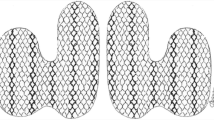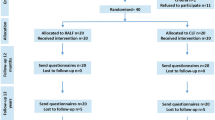Abstract.
Gastroesophageal reflux disease is probably the most frequently occurring benign functional disorder in the Western industrial countries. With the increasing popularity of laparoscopic anti-reflux procedures, issues on the appropriate technique have been revitalized. The purpose of this study is to evaluate the short- and long-term outcomes of laparoscopic fundoplication and reflect on the perspective of an increasing frequency of performed operations. The data sampling is based on a literature review and a questionnaire. It can be summarized that reflux recurrence due to breakdown of the wrap or herniation of the wrap can also develop in later years after the primary surgery and amount up to 8%. Persistent dysphagia is a severe problem in the first post-operative year, but usually decreases with time and is limited to rates of 3–5% on the long-term follow-up. Other functional problems, such as gas-bloat, meteorism and epigastric pain – the cause often cannot be further detected or specified – limit the quality of life of patients after laparoscopic anti-reflux surgery in the long-term follow-up in up to 5% of cases. Side effects of laparoscopic antireflux procedures can be limited to 5 to 10%, but not totally avoided.
Similar content being viewed by others
Author information
Authors and Affiliations
Additional information
Electronic Publication
Rights and permissions
About this article
Cite this article
Valiati, W., Fuchs, K., Valiati, L. et al. Laparoscopic fundoplication – short- and long-term outcome. Langenbeck's Arch Surg 385, 324–328 (2000). https://doi.org/10.1007/s004230000159
Received:
Accepted:
Issue Date:
DOI: https://doi.org/10.1007/s004230000159




